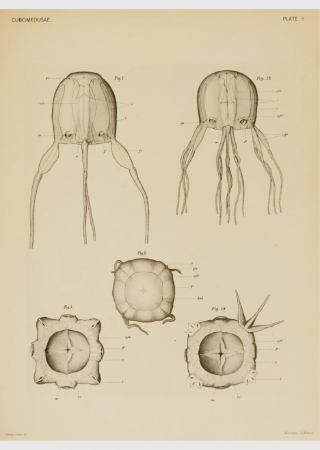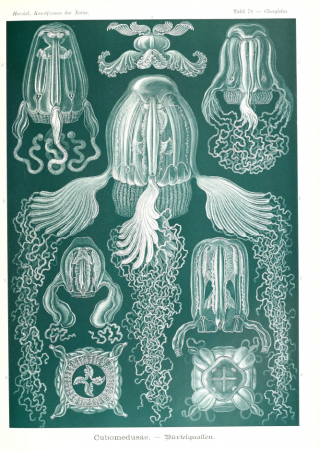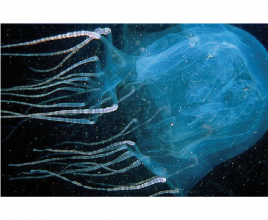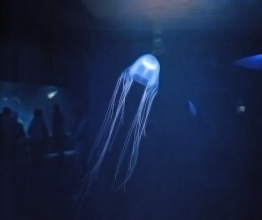Sea wasp / Box jellyfish
Chironex fleckeri
Did you know that… ?
- ...the sea wasp's poison is so effective that a 1:10,000 dilution of the poison will kill a lab mouse within a few seconds?
- ...fleckeri is named after Dr. Flecker, who investigated mysterious deaths on Australian beaches?
- ...a box jelly can swim up 9 km per hour?
- ...a person stung by a box jelly can die within minutes?
- ...the box jelly is not a true medusa, but belongs to the Cuboza class, while other medusae belong to the Scyphozoa class?
- ...first aid for a box jelly sting is the application of wine vinegar to the affected area?
- ...the box jelly is a predator, and consumes small fish and crustaceans?
Practical info
Basic information:
Phylum - Cnidaria
Class - Cubozoa
Maximum length - around 10 meters
Eats - small fish and crustaceans
Habitat - Australia
Type of poison - cardiotoxin
Distinguishing marks:
The bell is roughly cube-shaped with a massive shoulder at each corner, from which trail the tentacles. The box jelly may have as many as 60, and in adults they can reach a length of up to 10 meters. Its color is slightly blue, so it is almost invisible in seawater.
Characteristics and poison
The box jelly Chironix fleckeri is found off the coast of Queensland, from November through March. Other times of the year it probably lives in the Timor sea. It is the bane of all ocean-bathers. Contact with the tentacles causes a red swelling in the touched area, accompanied by an intense burning pain. Since the poison is a potent cardiotoxin, death comes from heart failure. The box jelly Chironix fleckeri was discovered after a tragic accident in 1955, when one stung a five-year-old boy wading in the water, who died within a few minutes.




